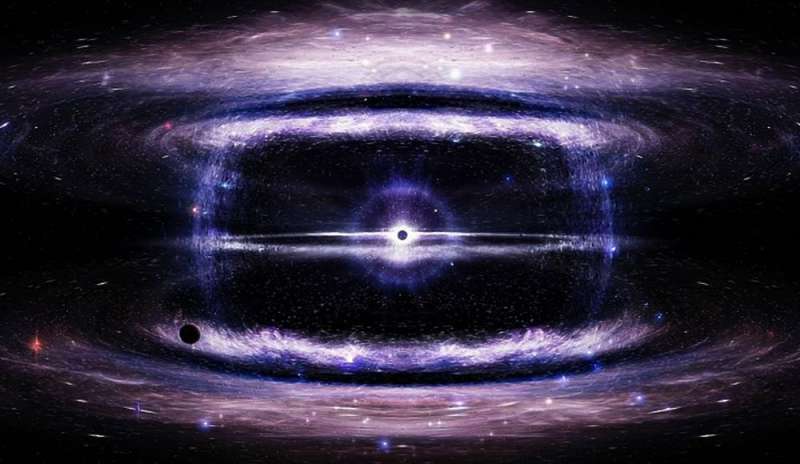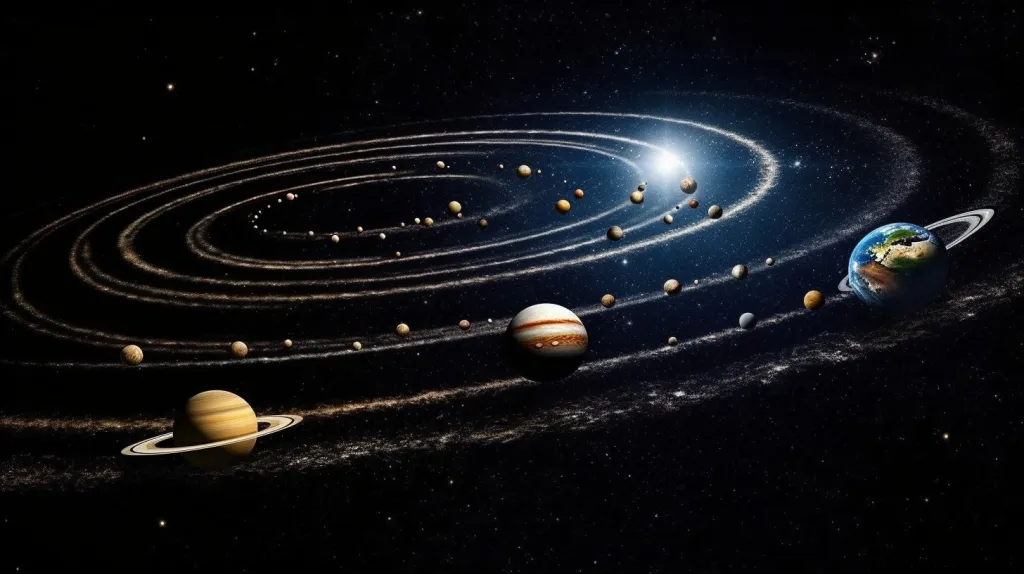Delve into the fascinating universe of hidden dimensions and the search for enigmatic dark matter. This mystery has intrigued scientists for decades, and its answers could redefine our understanding of the cosmos. In this exploration, we will uncover the secrets hidden in the shadows of the universe and how dark matter, despite being invisible, may be exerting a powerful influence on everything we know.
Dark matter, the invisible and undetectable substance that scientists believe makes up the universe's 27%, is a mystery that has yet to be solved. How can something so ubiquitous be so difficult to detect? And how can it affect the structure of the universe without us directly perceiving it? This will be one of the central themes we will unravel in our quest to understand this cosmic mystery.
In addition, we'll delve into the concept of hidden dimensions, a theory that proposes there are more dimensions in the universe than we can perceive. These hidden dimensions, according to some theories, could be home to the elusive dark matter. We'll explore the most advanced theories of physics to discover whether these hidden dimensions are a reality or simply a fascinating speculation.
Finally, we'll discuss the latest research and discoveries in this field, and how advances in technology and science are bringing us ever closer to unraveling these mysteries. Together, we'll unravel the mystery of hidden dimensions and the search for dark matter. Are you ready for a journey to the heart of the universe?
Understanding Dark Matter
Dark matter, although it cannot be seen, felt, or even detected by current scientific instruments, is a fundamental part of our universe. Astrophysicists and cosmologists suggest that approximately 80% of the mass of the universe is actually dark matter, an invisible component that does not interact with light or other forms of electromagnetic radiation.
How do we know dark matter exists?
The existence of dark matter was first suggested by astronomers in the 1930s, when they observed that galaxies in clusters were rotating faster than they should according to the known laws of physics. The only explanation for this anomaly was that there was a significant amount of undetected mass affecting the galaxies' rotation.
Dark Matter and Gravity
Dark matter interacts with gravity in a unique way. Although we can't see dark matter, we can see its gravitational effects on galaxies and the distribution of galaxies in the universe. This gives us insight into how dark matter is distributed and how it affects the evolution of the universe.
The Search for Dark Matter
The search for dark matter has been a significant challenge for astrophysicists. Although its existence has been inferred from various astronomical observations, its exact nature remains unknown. There are several theories suggesting what dark matter might be.

Dark Matter Particle Theory
One theory suggests that dark matter is composed of undetected subatomic particles. These particles, called WIMPs (Weakly Interacting Massive Particles), do not interact with light or regular matter, making them extremely difficult to detect.
Dark Energy Theory
Another theory suggests that dark matter is actually dark energy, a form of energy that permeates all space and is causing the expansion of the universe to accelerate.

Current Experiments and Observations
There are several experiments underway to try to detect dark matter. Some of these experiments are directly searching for dark matter particles, while others are looking for indirect evidence of their existence.
Direct Experiments
- The LUX (Large Underground Xenon) experiment is one of the most sensitive experiments to date for the direct detection of dark matter. It uses liquid xenon to attempt to detect collisions between dark matter particles and xenon nuclei.
- The SuperCDMS (Super Cryogenic Dark Matter Search) experiment is another experiment seeking to detect dark matter directly. It uses supercooled semiconductor crystals to try to detect collisions between dark matter particles and atomic nuclei.
Indirect Observations
Indirect observations of dark matter come from the gravitational effects it has on light and galaxies. An example of this is gravitational lensing, where light from distant galaxies is bent by the gravity of dark matter on its way to us.
The Future of the Search for Dark Matter
As technology and our understanding of physics advance, our chances of detecting dark matter increase. With each experiment and observation, we are one step closer to unraveling the mystery of dark matter and how it relates to the universe at large. Meanwhile, dark matter remains one of the biggest and most intriguing questions in physics and cosmology.
Conclusion
In short, the existence and mystery of hidden dimensions and the search for dark matter remain one of the greatest challenges and mysteries of modern physics. Despite technological and theoretical advances, a definitive answer has yet to be found. However, the possibility that hidden dimensions exist that are inaccessible to our direct perception, yet have a profound impact on the reality we know, is fascinating.
Dark matter, on the other hand, may be the key to unraveling these mysteries. The continued search for this elusive form of matter may open up new avenues for exploring and understanding the universe in ways we can't yet imagine.
Despite the challenges, the search for the truth about these hidden dimensions and dark matter is a testament to human ingenuity and our insatiable curiosity to understand the universe in which we live. The answers to these enigmas may not be easy, but every step we take toward understanding these questions brings us closer to unraveling the great mystery of our existence. Ultimately, only time will tell what we will discover.



